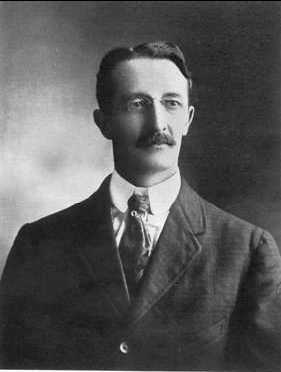History of chiropractic
History of Chiropractic
The history of chiropractic begins with its founding by Daniel David Palmer in the late 19th century. Palmer, a self-taught healer, proposed that manual manipulation of the spine could cure disease. The first chiropractic adjustment was performed in 1895 in Davenport, Iowa, on a janitor named Harvey Lillard, who had been partially deaf. Palmer claimed that the adjustment restored Lillard's hearing, and from this experience, Palmer deduced that misalignments of the spine (which he termed "subluxations") were the root cause of nearly all diseases.
Origins and Early Development[edit | edit source]
Chiropractic's early philosophy was rooted in vitalism, spiritual inspiration, and rationalism. Its approach to healthcare was distinct from that of traditional medicine, emphasizing the body's innate ability to heal itself when spinal adjustments correct subluxations. This concept was in stark contrast to the medical practices of the time, which often relied on drugs and surgery.
In 1897, D.D. Palmer founded the Palmer School of Chiropractic in Davenport, Iowa, which became the first institution of chiropractic education. His son, B.J. Palmer, played a significant role in developing chiropractic further, introducing X-rays to diagnose subluxations and advocating for a more scientific approach to chiropractic care.
Legal Challenges and Acceptance[edit | edit source]
The early 20th century was a tumultuous period for chiropractic, marked by legal battles over licensing and the scope of practice. Chiropractors were often jailed for practicing medicine without a license. The landmark case, Morikubo v. United States, in 1907, was pivotal in establishing chiropractic as a separate profession, legally distinct from medicine, based on its unique philosophy and techniques.
Throughout the 20th century, chiropractic gradually gained acceptance within the United States. By the 1970s, all 50 states had laws recognizing chiropractic as a healthcare profession. This period also saw the establishment of more chiropractic colleges and the formation of the Council on Chiropractic Education (CCE), which set standards for chiropractic education.
Modern Chiropractic[edit | edit source]
Today, chiropractic is recognized worldwide, with practitioners in over 100 countries. The profession has diversified, with practitioners adopting a range of techniques and approaches to care. While traditional Palmer-style adjustments remain central to many practices, others incorporate modern technology and integrate evidence-based practices from other disciplines.
The scope of practice for chiropractors varies by jurisdiction but typically includes the diagnosis and treatment of musculoskeletal disorders, with a focus on spinal manipulation. Some chiropractors also offer advice on diet, exercise, and lifestyle, and may perform other complementary treatments.
Controversies and Criticism[edit | edit source]
Despite its growth and acceptance, chiropractic has faced criticism from the medical community and within its own ranks. Debates have centered on the scientific validity of its foundational theories, particularly the concept of subluxation and its role in disease. The profession has made efforts to address these criticisms by promoting research and adopting evidence-based practices.
Conclusion[edit | edit source]
The history of chiropractic is a story of perseverance, controversy, and evolution. From its origins as a unique approach to healthcare, based on the manipulation of the spine to correct supposed subluxations, it has grown into a recognized profession with a presence around the world. Despite ongoing debates about its scientific basis and scope of practice, chiropractic continues to be a popular choice for patients seeking alternative or complementary healthcare options.
Translate: - East Asian
中文,
日本,
한국어,
South Asian
हिन्दी,
தமிழ்,
తెలుగు,
Urdu,
ಕನ್ನಡ,
Southeast Asian
Indonesian,
Vietnamese,
Thai,
မြန်မာဘာသာ,
বাংলা
European
español,
Deutsch,
français,
Greek,
português do Brasil,
polski,
română,
русский,
Nederlands,
norsk,
svenska,
suomi,
Italian
Middle Eastern & African
عربى,
Turkish,
Persian,
Hebrew,
Afrikaans,
isiZulu,
Kiswahili,
Other
Bulgarian,
Hungarian,
Czech,
Swedish,
മലയാളം,
मराठी,
ਪੰਜਾਬੀ,
ગુજરાતી,
Portuguese,
Ukrainian
Navigation: Wellness - Encyclopedia - Health topics - Disease Index - Drugs - World Directory - Gray's Anatomy - Keto diet - Recipes
Search WikiMD
Ad.Tired of being Overweight? Try W8MD's physician weight loss program.
Semaglutide (Ozempic / Wegovy and Tirzepatide (Mounjaro) available.
Advertise on WikiMD
WikiMD is not a substitute for professional medical advice. See full disclaimer.
Credits:Most images are courtesy of Wikimedia commons, and templates Wikipedia, licensed under CC BY SA or similar.
Contributors: Prab R. Tumpati, MD





